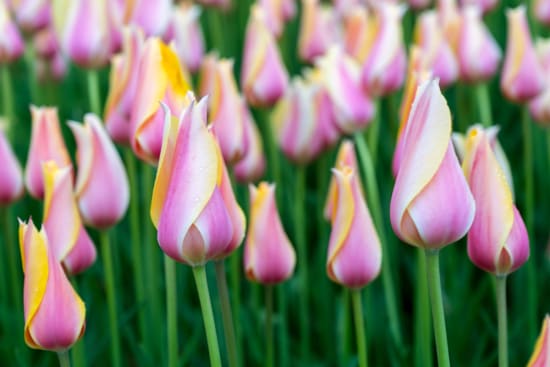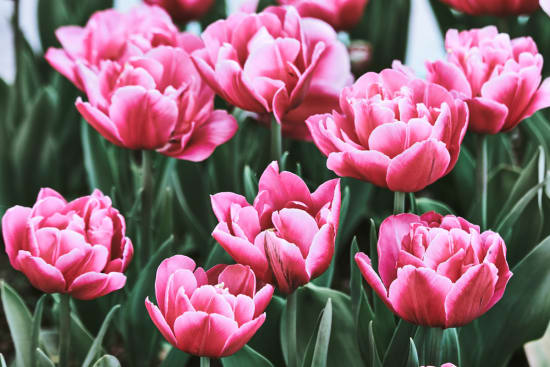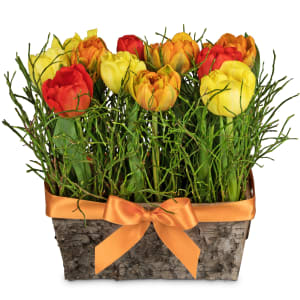Tulips intrigue us again and again
We are all familiar with tulips. But there are also mysteries. For example, why do they continue to grow in the vase? And why do they close their flowers at night?

Tulips continue to grow in the vase
Have you ever noticed that tulips in a mixed bouquet start to outgrow the other flowers after only one day in the vase?
They're even particularly zealous. Because they will majestically overhang the rest of the bouquet after three to four days. What happened?

Addicted to water
In the plant world there is, among other things, the principle of elongation growth. In an initial phase, the plant does form the cells that are important for growth by cell division, but after that it only grows by stretching the cells. These grow because
they absorb more and more water in their interior and thereby expand lengthwise.
Now, what makes the tulip different from other flowers is that it continues to grow for a few days by absorbing water from the vase, even as a cut flower.

Why do tulips close their flowers at night?
It is not the lack of light that causes tulips to close their corolla at night, but the lack of heat. As the air surrounding the tulip cools, the outer part of the petal begins to grow.
The petals then curve inward and the corolla closes. But when the heat increases, the inner part of the petals grows and the petals curl outwards.

When do tulips open their flowers more quickly?
On very warm days, tulips even open to the point where the petals overhang.
Botanists call this movement, triggered by temperature stimuli, "thermonasty." It is repeated dozens of times during the blooming period.
By the way, the blossoming of a tulip bud is also mainly dependent on temperature.
This is because when closed tulips are in water at about 30 degrees, they open their flowers much faster than in cold water.
More about the most popular spring flower
All my worldly goods for a single tulip bulb
Horrendous real estate prices? We know that. But for tulip bulbs? Read what was paid for a single bulb at the height of the tulip mania.
Tulips - a flop when fried, tops in the vase
What did a merchant do when he was delivered unknown onions in the 16th century? He ate them, which was a mistake. Because they were tulip bulbs.
About colors
Tulips are not just tulips. Because depending on the color, they have different messages and effects.
Aphids «created» the most expensive tulip
In the past, multicolored tulips were particularly valuable. This gave the growers the craziest ideas and they started to experiment.
Tulips stand for new life, immortality and love
Initially, tulips represented new life, love and tenderness. No wonder then, that today they are also given as messengers of love.
Tulips intrigue us again and again
We are all familiar with tulips. But there are also mysteries. For example, why do they continue to grow in the vase? And why do they close their flowers at night?
Wild tulips of Valais
Do you fancy wild tulips, which are nowhere else to be found or are at least extremely rare? In the canton of Valais there are two species of wild tulips.









